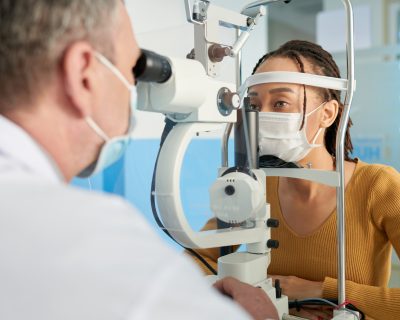
How to Avoid Computer Vision Syndrome
Computer vision syndrome is a term which describes a variety of eye conditions caused by focusing on a computer screen for hours at a time. Computer screens are not the only culprit, as the syndrome also covers e-readers, tablets, and cell phones – all of which can cause severe eye strain when used for extended periods.
An average office worker will spend from 7 to 8 hours focused on their work computer screen. Then there’s a commute on the train or the bus which may involve heavy cell phone use, and once arriving at home there is often more computer time, or the TV takes over. With the multitude of small screens taking up so much of our focus, it’s easy to forget to take care of our eyes.
You will know if you are suffering from computer vision syndrome if you recognize any of the following symptoms:
• Headaches
• Blurred vision
• Neck and shoulder pain
• Dry eyes
To combat the growing number of workers suffering from computer vision syndrome, the Canadian Association of Optometrists have developed a few guidelines to help save your eyes.
Position your screen at approximately arm’s length and 20 degrees below eye level. Match the brightness of your screen to your surroundings (i.e., use a dimmer setting in a darkened room). Adjust the lighting in the room to minimize glare off the screen, and regularly clean your screen to keep it free of dust and fingerprints as this will help to improve the clarity.
Some more good advice is to remember to blink. The average rate of blinking is 12 times per minute, but staring at a computer screen can drastically reduce this number to 5 times a minute, putting your eyes at high risk of drying out.
The American Optometric Association developed a 20-20-20 to help reduce the world’s army of office workers from suffering through headaches and blurred vision from overstrained eyes, and it’s very easy to do. Every 20 minutes, take a 20-second break from your screen and focus your eyes on something 20 feet away.
Regular visits to your optometrist are also a good idea if you want to have the best chance at warding off symptoms caused by computer vision syndrome.




